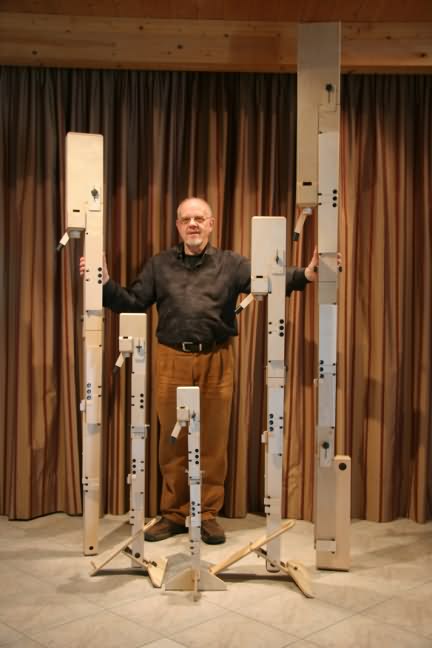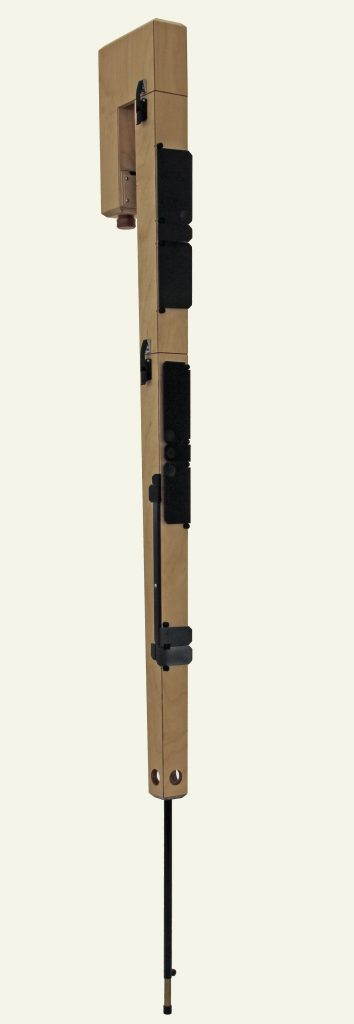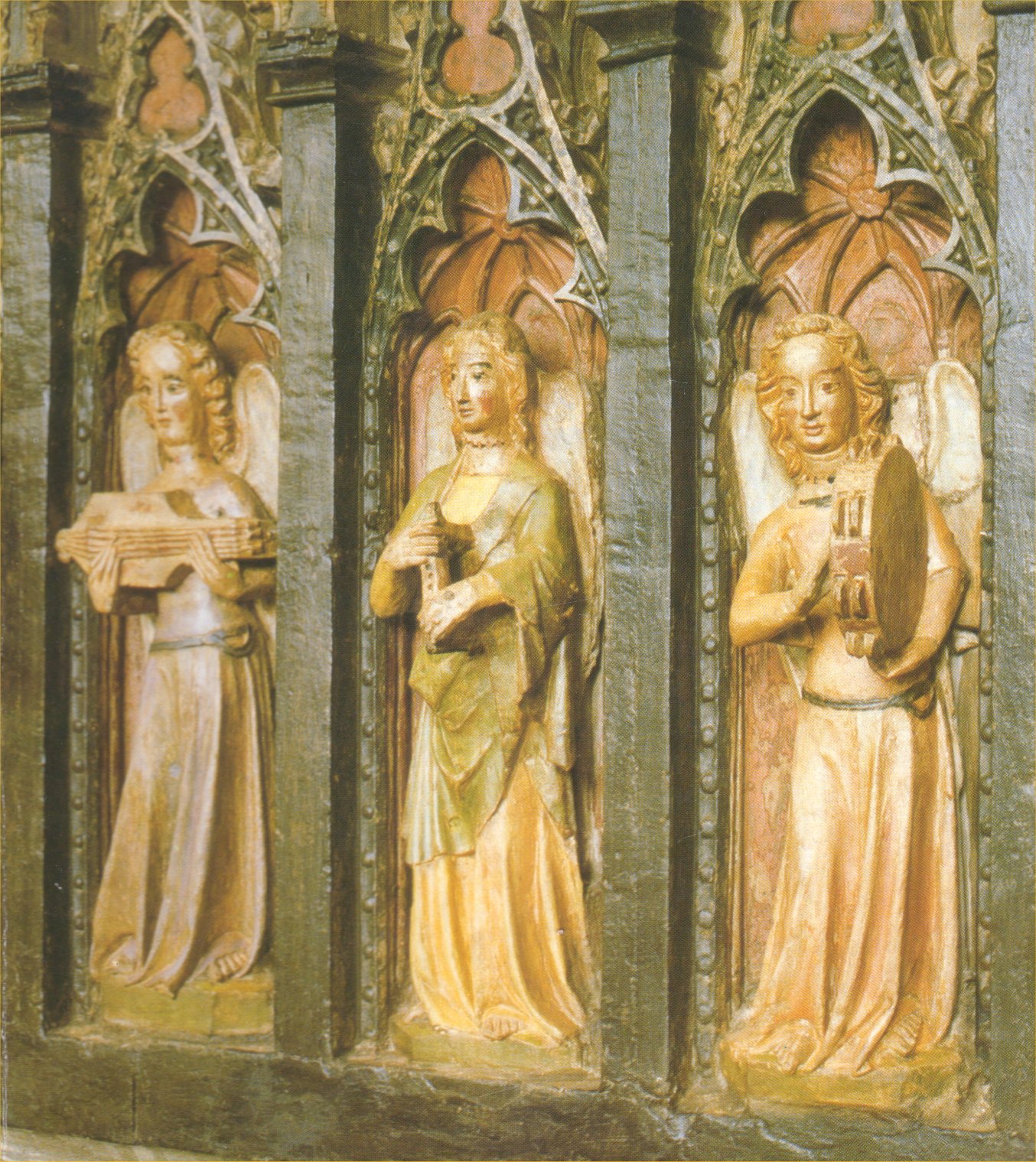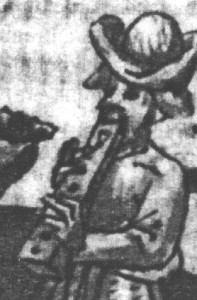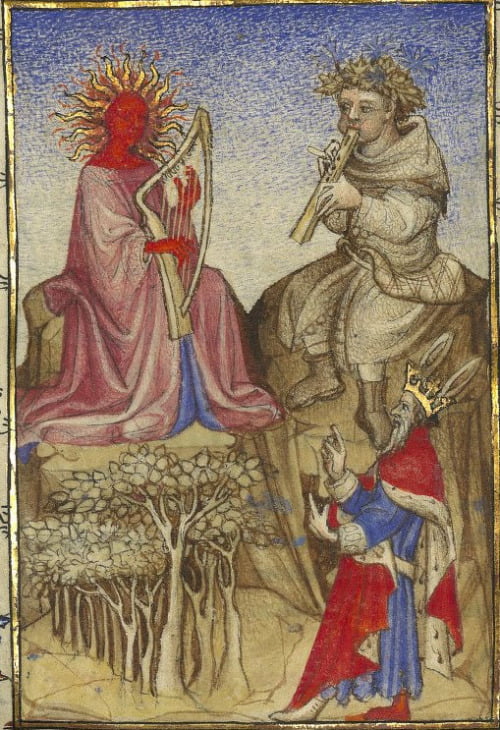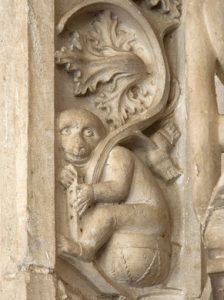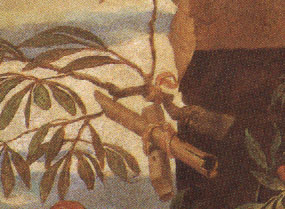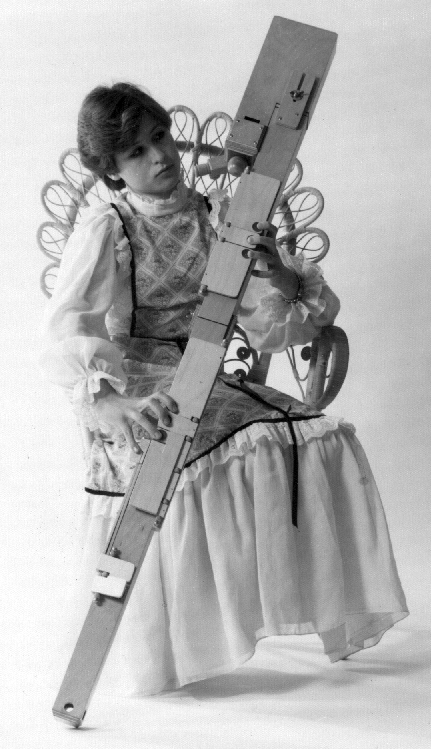Cranked organ pipes
Over the past decade or so square-profile bass recorders have become enormously popular. They are most familiar to us in the form of cranked organ pipes, first designed and made by Joachim Paetzold in 1953. Their design was patented and further developed by Joachim’s nephew Herbert Paetzold in 1975. Their ease of construction and their use of inexpensive materials lend themselves particularly well to the larger sizes of recorder rendering these otherwise very costly instruments more affordable to a wider range of players. Furthermore, their tone is impressively strong in the lower register, and they speak easily over two or more octaves.
These wonderful instruments are capable of an extraordinary range of timbre, attack, and other sound effects and have become the tools of choice for recorder players exploring what back in the day used to be called musique concrète, these days known as “contemporary music”.
In 2012 the rights and production of the square-profile Paetzold bass recorders were transferred to the workshop of Joachim Kunath, their name changed to “Paetzold by Kunath” and the workshop itself relocated from Ebenhofen to Fulda. They are now made in the following sizes: tenor in C4, basset in F3, bass in C3, sub-bass in F2, contrabass in C2, double sub-bass in F1, and double contrabass in C1. Each has a full two-octave range. Now 16-foot, 8′, 4′, and 2′ pitched sets of recorders are available for consort, recorder choir, or continuo use. Whilst it is tempting to think of a hyperbass recorder in C0, Joachim Sickert (pers. comm., 2022), who owns a complete set of Paetzold recorders, comments that from a purely physical point of view, a recorder lower in pitch than C1 would no longer be playable. Construction materials used in Paetzold by Kunath recorders include birch, cherry, mahogany, and RESONA. The latter is a synthetic composite with a similar density to rosewood but made from renewable raw materials. The range incorporates many innovations, including the option of a direct-blown mouthpiece.
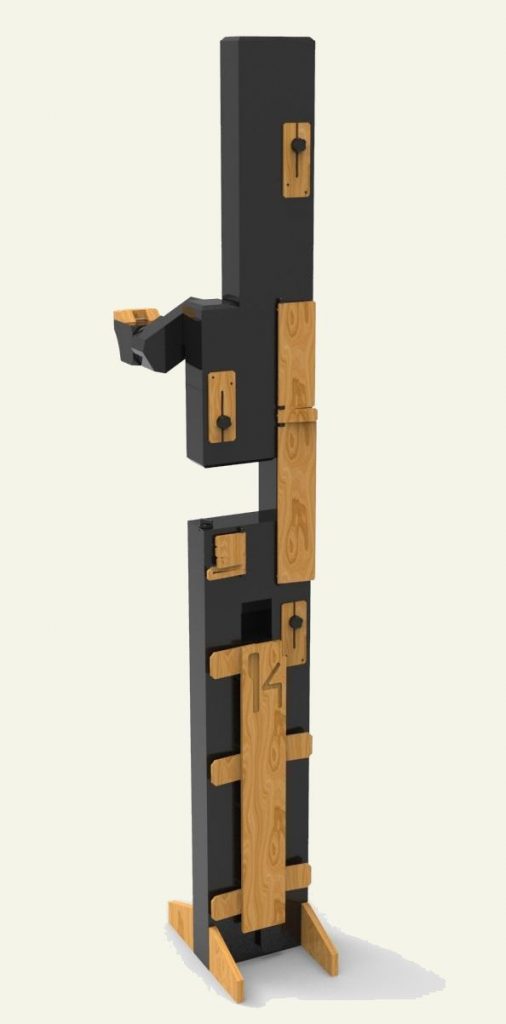
Independently of Joachim and Herbert Paetzold, New Zealand maker Alec Loretto built an experimental square-profile bass recorder in 1967, a photograph of which was published by him in 1970 (Loretto 1970, Madgwick & Loretto 1996), although it lacked keywork of any kind. Dolmetsch also adapted the square-profile approach to their own range of Millennium Series bass recorders which were furnished with conventional woodwind keywork.

The Dolmetsch organisation ceased operation some years ago. However, the Dutch recorder maker AAFAb currently offers their own series of Coolsma Millenium square-profile bass in C3 and sub-bass in F2, which seem to combine features of the Paetzold and Dolmetsch designs.
A further development of the square bass recorder was the compact design contrabass in F designed by Denis Thomas (2004), reminiscent of the so-called columnar recorders of the sixteenth century. Colin Windsor (2004) provided details of a direct-blow square-profile basset of his own design and construction.
Stephen Toyne (2023) makes a square-profile basset recorder in F3 and a sub-bass in F2 which appear to follow the Paetzold design. They feature keys, mouthpiece and slotted fixing plates, made from solid beech, quality long lasting neoprene seals and solid brass key stops. The bodies of these instruments are painted Wedgewood Blue, or other colours if preferred.
At the same time as Peter Harlan initiated the Recorder Movement in 1928, the construction of bamboo recorders was introduced in Germany (Schuman 1952). Hitherto (including in Germany), bamboo flutes had been made with six fingers and one thumbhole and continued to be so, but Schuman’s instruments were based squarely on the recorder with its seven finger holes and one thumbhole, and they adopted Harlan’s “German” fingering (Thalheimer 2021). They were made in various sizes, amongst them tenor and bass instruments with square profiles, illustrated by Christoff Schellenberger (c.1955).

Alec Loretto published instructions for making DIY square-profile “medieval” soprano and alto recorders in 1996 (Loretto 1996a&b, 1998). But perhaps he was anticipated in this by actual medieval forerunners of his craft. One of a series of anonymous 14th-century painted limestone carvings in the musicians’ gallery of Exeter Cathedral depicts a musical angel who appears to be holding a duct flute which is square in cross-section, though I note that these carvings were restored in 1976 (Kinsky et al. 1930: 51; Cave 1953: 60; Crispin 1968: 358-9; Early Music 1987: front cover).
An anonymous 15th-century manuscript (F Lm 391, f. 28) depicts a man in what looks like a bowler hat playing a duct flute which is decidedly square in cross-section.
A second 15th-century depiction of a square-profile recorder can be found in a copy of Christine de Pisan’s L’Epître d’Othéa (ca 1406), namely Midas Judging the Contest Between Pan and Apollo, an illumination by the Master of the Epistle of Othéa (F 606, f. 14r.)
A third 15th-century square-profile recorder is clutched in the hands of a grinning ape sitting on a drum in an anonymous stone relief in the cloister of the Monastery of San Juan de Los Reyes, Toledo. A notable feature of this version is the placement of finger holes for each hand on adjacent faces of the body of the instrument.
Note that the artists in all four of these medieval depictions seem perfectly capable of rendering curved surfaces and edges where they wished to.
In one of the 21 mid-16th-century circular paintings adorning the ceiling of the great room of the Libreria Vecchia (Biblioteca Marciana) which illustrate allegories of education, the arts and the sciences, two women play viol and lute watched by a third. Between them stands a wingless cupid, probably intended to underline the connection of music with love. Behind them, the figure of Pan-Priapus gazes down from a plinth. Above them, two broken recorders tied together, hang from a willow tree, possibly votive gifts from shepherds.
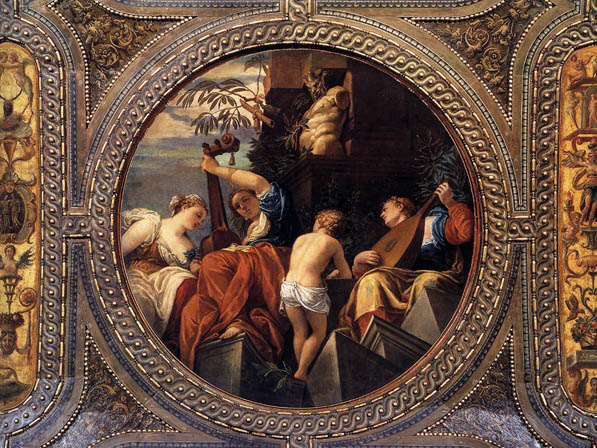
Curiously, the smaller of the two recorders is of square construction, like a wooden organ pipe; the larger one, has the more familiar round profile.
References
- Boragno, Pierre. 1998. “Flûtes du moyen age: éléments de recherche [Members of the Flute Family of the Middle Ages: Elements of Research].” Les cahiers de musique médiévale 2: 6–20.
- Cave, Charles John P. 1953. Medieval Carvings in Exeter Cathedral, with a Note on the Art of the Exeter Carvers by Nikolaus Pevsner. King Penguin Books 62. London: Penguin.
- Crispin, B. 1968. “In the Minstrel’s Gallery.” Recorder & Music 2 (11): 358–59.
- Early Music 15 (1): front cover (1987, col.).
- Kinsky, George, Robert Haas, and Hans Schnoor. 1930. A History of Music in Pictures. London: J. Dent & Sons.
- Kunath, Joachim. Instrumentenbau: Paetzold by Kunath. https://www.kunath.com/Paetzold-by-Kunath/
- Lander, Nicholas S. 1996–2025. Recorder Home Page: Iconography. Accessed 26 April 2021. https://www.recorderhomepage.net/recorder-iconography/
- Loretto, Alec V. 1996a. “Make Your Own Recorder in C’ at A-440 Hz.” Recorder Magazine 16 (3): 92–95.
- ———. 1996b. “Tuning Your Square Medieval Recorder.” Recorder Magazine 16 (4): 130–32.
- ———. 1970. “Adjustable Lip on the Recorder.” Recorder and Music Magazine 3 (8): 278–79.
- ———. 1998. “Make Your Own Medieval Treble Recorder in F.” Recorder Magazine 18 (1): 8–9.
- Madgwick, Paul, and Alec V. Loretto. 1996. “Communication 1486: Old Recorders for New (Recorder Patents).” FoMRHI Quarterly 85: 35–44. http://www.fomrhi.org/uploads/bulletins/Fomrhi-085.pdf
- Menkveld, Gerrit. 2000a. “De vierkante blokfluiten (van J.H. Piepenbroek) uit Wilp (uitgebreid met tekeningen) [Square Recorders (JH Piepenbroek) from Wilp (Complete with Drawings)].” Bouwbrief 96: 3–7.
- ———. 2000b. “Rectificatie en aanvulling op de `vierkante blokfluiten’ (bb-96) Correction and Additions “Square Recorders’ (BB-96).” Bouwbrief 97: 17–18.
- Piepenborke, J.H. 1998. “Reactie: Vierkante blokfluiten [Response: Square recorders].” Bouwbrief 91: 16.
- Schellenberger, Christoff. 1955. “Vielerlei Flöten und Pfeifen [Various flutes and pipes].” Werkbogen J4 der Werkgemeinde [Worksheet J4 of the Work Community], Bärenreiter-Verlag, Kassel. VIAF ID 49740758. Deutsch National Bibliothek. http://viaf.org/viaf/49740758
- Schumann, Heinrich. 1952. Die Bambusflöte. Anleitung zur Herstellung verschiedener Flötentypen [The Bamboo Flute. Instructions for Making Different Types of Flute]. Edited by Fritz Jöde. Vol. 7. Musikerziehung und Musikpflege [Building Blocks for Music Education and Music Care]. Mainz: Schott’s Söhne.
- Thalheimer, Peter. 2021. „Pipers’ Music“ und „Pipeaux Mélodies“ Bambusflötenmusik im Blockflötenrepertoire [“Pipers’ Music” and ‘Pipeaux Mélodies’, Bamboo flute music in the recorder repertoire].” Tibia – Online. 2021. https://www.moeck.com/en/tibia/tibia-online/artikel/?article=2265.
- Thomas, Denis. 2000. “A DIY Square C Bass.” Recorder Magazine 20 (1): 5–6.
- ———. 2004. “A Novel Compact F Contra[Bass].” Recorder Magazine 24 (4): 120–22.
- Toyne, Stephen. 2023. Website: Fenland Recorders. http://www.spanglefish.com/fenlandrecorders/
- Windsor, Colin. 2004. “A Bass Recorder between Round and Square?” https://colin-windsor.github.io/HomePage/bass/bass.htm
Cite this article as: Nicholas S. Lander. 1996–2025. Recorder Home Page: A Round History of Square Recorders. Last accessed 16 November 2025. https://recorderhomepage.net/a-round-history-of-square-recorders/
